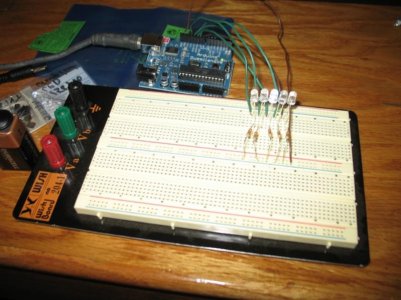DWZM, interesting idea, however I don't think it is worth it. Here is why:
Mouser parts: basic arduino(caps, resistors, resonators, sockets, headers etc) + rtc(with battery) will be around $20($30 with PSU) + shipping ($6.95)
Modern devices parts: AVR, LCD and programming cable/board: $28.50 + shipping ($7.90?)
PCB (assuming 10 ppl get together to do a group buy) - $2 + shipping (figure $1)
So total so far is $50.50+shipping or about $65. Add the PSU and you're looking at $75 just to gather the parts without a project box. And hopefully the person has all tools to do the soldering.
If you order an arduino board ( even the arduino nano 3.0 at $35 ), LCD and RTC parts from mouser + radioshack protoboard for the RTC, the cost will be the same, will give you the same functionality and will save many hours of work. With that option you don't need the programming cable either, just a plain USB one.
That being said I don't think an LCD is even needed. After you've configured the arduino, the only useful info on that LCD will be the time

Others might think differently, but for me it is not worth it to spend the extra time building a standard arduino, when a commercial arduinos cost $30 and come with the programming interface built in.
It might be more useful to put together some documentation how to build an RTC module, hook it to any arduino and provide the software to program and configure the controller once and forget about it.
THz

